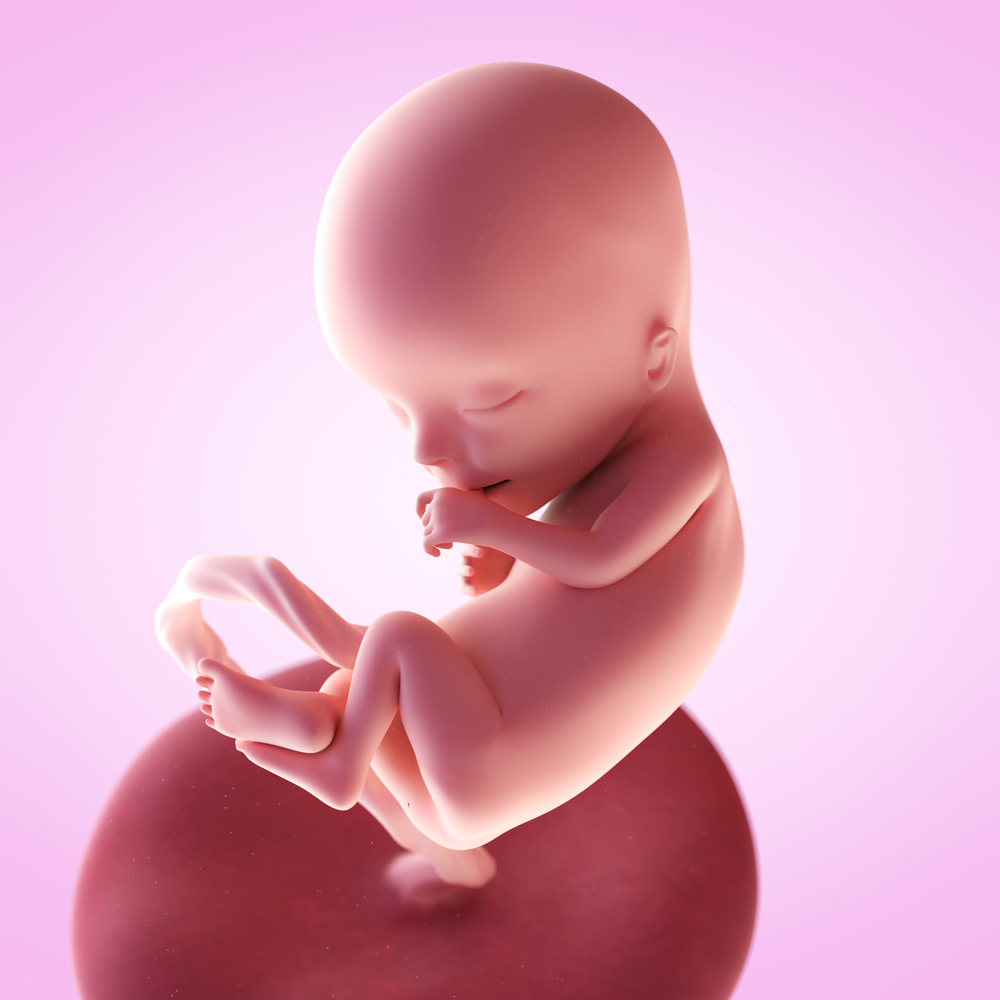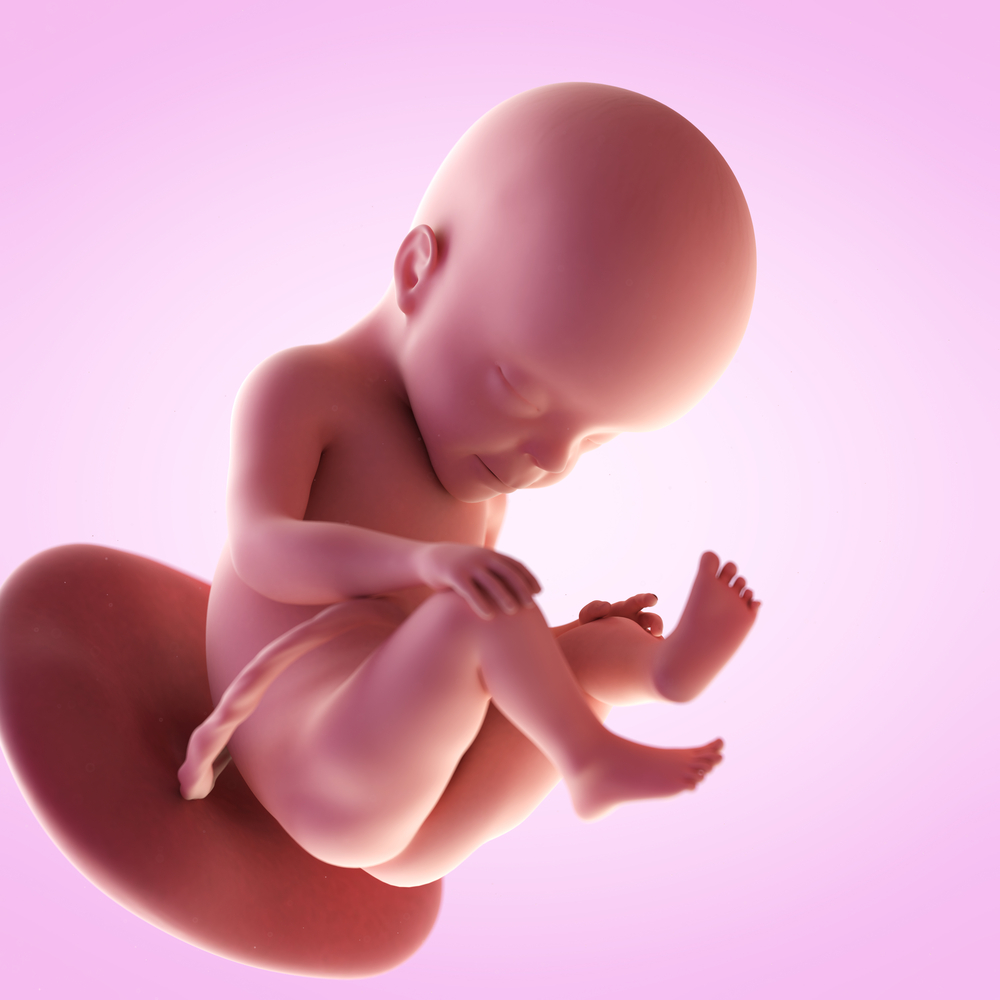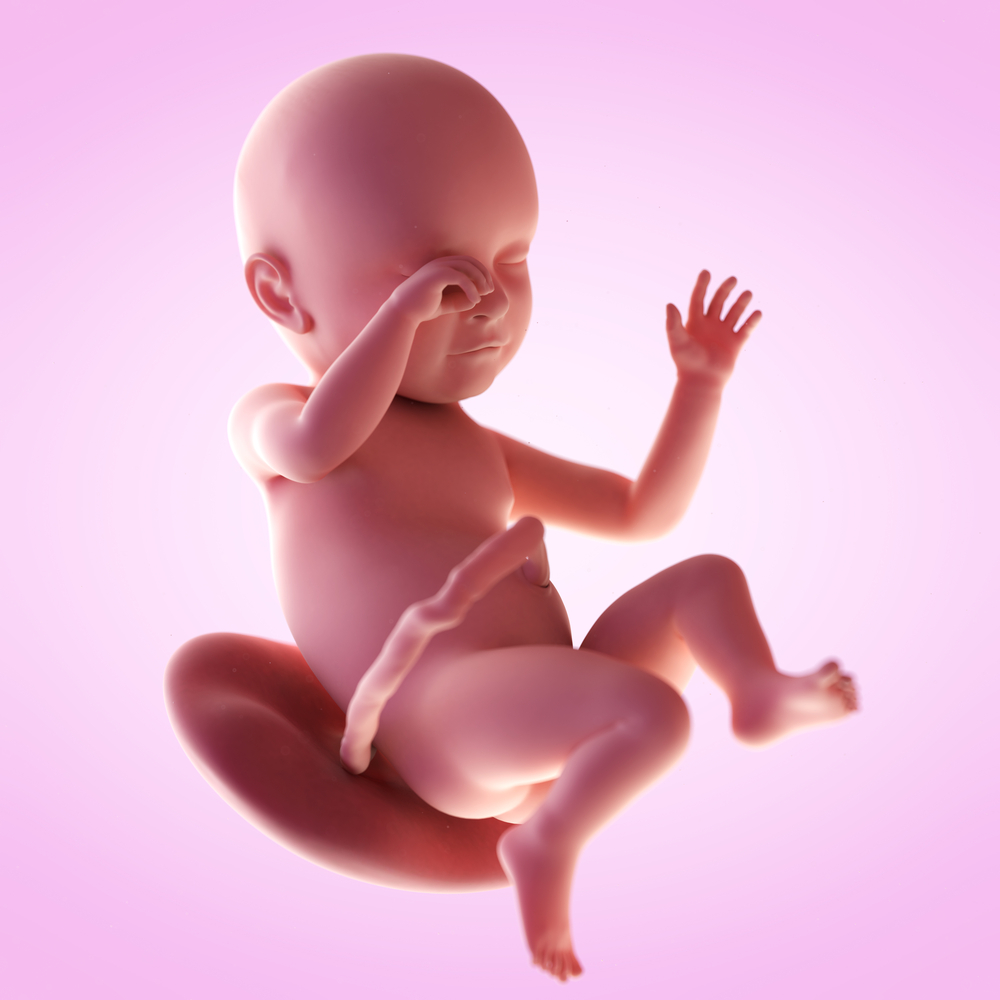Fetal Development Timeline

Your body, as well as that of your growing baby, undergoes many changes during your pregnancy. Take a closer peek at what’s going on each week with our fetal development timeline.
Throughout the pregnancy process, your child will transform from a tiny fertilized egg, to a fully-formed baby. Here, we answer some questions you may have about your baby’s major milestones during pregnancy, with a general week-by-week guide on fetal development.
Your fetal milestone calendar
While we’ve made it easy for you to track developments throughout your pregnancy, please keep in mind that the week-by-week guide is only an estimate, and is therefore not definitive. Every woman’s body may experience these milestones at different times.
FIRST TRIMESTER: (Week 3–12)
Week 3: Life begins as a blastocyst
Development: Right now, your baby is a ball of cells called a blastocyst. The blastocyst contains DNA from you and your husband, which determines sex, eye color, and other features.
Size: Smaller than a grain of salt.
Week 4: Your baby is taking shape
Development: During this time, your baby is transforming from your little ball of cells called blastocyst to an embryo. Also, his organs will begin to take shape in the next 6 weeks.
Size: Your baby is the size of a poppy seed, about 2mm.
Week 5: Their first heart beat
Development: Not only is your baby’s heart starting to beat, it beats at twice the rate of yours.
Size: Your baby is no bigger than a sesame seed, about 3mm.
Week 6: A face to the name takes shape
Development: Your baby’s facial features are beginning to form. Eyes and nostrils are forming, and stumps are appearing where their arms and legs will be.
Size: Your baby has grown to the size of a lentil, about 5mm.
Week 7: Arms, legs and more
Development: Little hands and feet that look more like paddles are emerging from the developing arms and legs.
Size: Your baby has doubled in size since week 6. At this stage, his size could be likened to that of a blueberry, about 1.2cm.
Week 8: Your baby’s limbs are forming
Development: Arms and legs are growing, and your baby now has little fingers, as well as a nose and upper lip. You won’t feel it yet, but your baby will start to move now too.
Size: No bigger than a kidney bean, about 1.6cm.
Week 9: Your baby is starting to look more human
Development: Even though your baby’s eyes are fully developed, their eyelids are still closed. They will open around week 28.
Size: About as big as a grape at 2cm.
Week 10: Now a fetus
Development: Vital organs like the kidneys, intestines, brain and liver are starting to work. Nails are also visible at this stage. Your baby’s skin is still see-through, but his limbs can move and bend. Your baby’s fingerprints are also developing now.
Size: Your baby is the size of a strawberry, about 3cm.
Week 11: More baby than ever
Development: Your baby is almost a baby in every sense of the word, kicking and stretching. He will soon begin to hiccup, which is something that occurs as his diaphragm develops. You won’t be able to feel hiccups until week 27.
Size: Your baby is the size of a fig, about 4cm.
Week 12: See your baby move
If you poke your 12-week pregnant belly while looking at him on the ultrasound during the prenatal checkup, you’ll likely see movement.
Development: Also, during week 12, your baby’s reflexes start to work. Their fingers will soon begin to open and close, their toes will start to curl, and mouth will make sucking movements.
Size: Your baby is the size of a lime, about 6cm.


SECOND TRIMESTER: (Week 13–27)
Week 13: Your baby now has fingerprints
Development: Your baby is beginning to make urine and release it into the amniotic sac, making amniotic fluid. Bone now replaces tissue around your baby’s head and inside arms and legs. His first fingerprints also take shape. Veins and organs can be seen through the skin.
Size: Your baby is the size of a peach, about 8cm in size.
Week 14: You can identify your baby’s sex
Development: Your baby’s kidneys are working, his arms have almost reached the final relative lengths they’ll be at birth and his neck has become more defined.
Size: Your baby is the size of a lemon, about 9cm.
Week 15: Your baby’s skeleton develops bones
Development: Your baby is growing rapidly. His skeleton is developing bones, which will become visible on ultrasound images in a few weeks. His scalp hair pattern is also forming.
Size: Your baby is the size of an apple, about 10cm in size.
Week 16: Your baby’s movements are becoming coordinated
Development: Your baby’s eyes have begun to face forward and slowly move. his legs are more developed and his head is more upright.
Size: Your baby is now the size of an avocado, about 11.5cm in size.
Week 17: Baby fat accumulates
Development: Your baby’s toenails have begun to develop. Soon fat stores begin to develop under your baby’s skin which will provide energy and help keep him warm after birth. The umbilical cord is growing stronger and thicker.
Size: Your baby is now the size of a pomegranate, about 13cm in size.
Week 18: Your baby may begin to hear
Development: Your baby’s ears begin to stand out on the sides of his head. He might also begin to hear your voice. Internally, your baby is producing myelin, a protective coating that surrounds some nerve cells, forming an electrically insulating layer that is essential for the proper functioning of the nervous system.
Size: Now Your baby is the size of an artichoke, about 14cm in size.
Week 19: Your baby’s senses are coming to life
Development: A special coating begins to cover your baby. This coating helps protect your baby’s delicate skin from ailments that can result from exposure to the fluid that surrounds him. Your baby’s senses – smell, vision, touch, taste and hearing – are developing. He may even be able to hear your voice.
Size: Your baby is now the size of a mango, about 15.5cm in size.
Week 20: The halfway point
Development: You are now halfway through your pregnancy. At this stage, you might be able to feel your baby’s movements. Your baby can swallow now and his digestive system is producing meconium: the dark, sticky goo that will pass in their first poop.
Size: Your baby is about 16.5cm in size from head to rump, but 25.5cm from head to toe as the legs continue to develop. Until the 20 week mark, babies are typically measured from the top of the head (the crown) to the rump (the bottom). This is due to the fact that baby’s legs are curled up against the torso up until the halfway mark of the pregnancy and are quite hard to measure. After 20 weeks, babies are measured from head to toe.
Week 21: Your baby starts to really move
Development: Your baby’s movements have gone from slight to full-swinging kicks and jabs against the walls of your womb. You may also start to notice patterns to the movements; for example, more movements after eating.
Size: Your baby is now the size of a carrot, about 26cm in size from head to toe, and weighs approximately 360g.
Week 22: Your baby’s hair becomes visible
Development: Your baby’s skin is completely covered with protective fine hair at this stage, which will fall off shortly after they are born.
Size: Your baby is the size of a squash, about 27-28cm in size, and weighs approximately 430g.
Week 23: Taste and sounds
Development: Your baby’s skin is wrinkled and will smooth out as he grows. Your baby’s tongue will soon develop taste buds and his ears are steadily getting better at picking up sounds.
Size: Your baby is the size of a large mango, about 29cm in size, and weighs approximately 500g.
Week 24: Your baby’s asleep!
Development: Your baby is regularly sleeping and waking. Real hair is growing on his head. His skin is still see-through, but that will begin to change soon.
Size: Your baby is about the length of an ear of corn, about 30cm in size, and weighs approximately 600g.
Week 25: Your baby responds to your voice
Development: Your baby’s hands and reflexes continue to develop as well as his ability to respond to familiar sounds. Also, his hair is beginning to fill with colour and texture.
Size: Your baby is the size of a rutabaga, about 34cm in size, and weighs approximately 660g.
Week 26: Your baby is practicing his breathing
Development: Your baby’s lungs are now beginning to work. They are currently breathing amniotic fluid in and out as practice for when he has to breathe in air as soon as he is born.
Size: Your baby is the size of red cabbage, about 36cm in size, and weighs approximately 760g.
Week 27: 2nd trimester ends
Development: This is the last week of your second trimester. Your baby’s sleep patterns are now regular. His brain is now very active and although his lungs aren’t fully developed, they can already function on their own.
Size: Your baby is about the size of a head of cauliflower, about 37cm in size, and weighs approximately 875g.


THIRD TRIMESTER: (Week 28–41)
Week 28: 3rd trimester begins
Development: His eyelids can now open and they will start to blink. As his brain develops and eyesight improves, your baby might be able to sense light from outside.
Size: Your baby is now the size of an eggplant, about 38cm in size, and weighs approximately 1kg.
Week 29: Getting ready to come out
Development: Your baby’s muscles and lungs are equipping themselves with what they will need when he exits to the outside world. His head is growing to make room for his developing brain.
Size: Your baby is the size of a butternut squash, about 39cm in size, and weighs approximately 1.15kg.
Week 30: Taking up more room
Development: Your baby is claiming more space inside your uterus. He is surrounded by approximately 500ml of amniotic fluid.
Size: Your baby is the size of a large cabbage, about 40cm in size, and weighs approximately 1.3kg.
Week 31: Fat for protection
Development: Your baby can now turn his head from side to side. A protective layer of fat is accumulating under his skin, filling out his arms and legs.
Size: Your baby is the size of a large cabbage, about 41cm in size, and weighs approximately 1.5kg.
Week 32: Your baby’s nails are growing
Development: During this period, your baby’s nails will begin to grow, and he will continue to develop in preparation for his birth.
Size: Your baby is the size of a napa cabbage, about 42cm in size, and weighs approximately 1.7kg.
Week 33: Head
Development: The bones in your baby’s skull aren’t fused yet, which means he still can’t fit through the birth canal.
Size: Your baby is the size of a pineapple, about 44cm in size, and weighs approximately 1.9kg.
Week 34: The nervous system develops
Development: Your baby’s skin has become soft and smooth and his central nervous system is constantly maturing, as are his lungs.
Size: Your baby is now about the size of a cantaloupe, about 45cm in size, and weighs approximately 2.1kg.
Week 35: He’s getting ready
Development: It’s getting snug for your baby inside your womb – it’s almost time to come out. Your baby’s kidneys are fully developed, and his liver can start processing.
Size: Your baby is now the size of a honeydew melon, about 46cm in size, and weighs approximately 2.4kg.
Week 36: Growing and growing
Development: Your baby is gaining about an ounce a day and is also starting to lose the fine hair on his body as well as the waxy substance that protected his skin.
Size: Your baby is the size of a romaine lettuce, about 47cm in size, and weighs approximately 2.6kg.
Week 37: Your baby is now ‘early term’
Development: If your baby is born this week, he might still have a little fine hair on his body, but his lungs are more than likely capable of adjusting to life outside the womb.
Size: Your baby is the size of swiss chard, about 49cm in size, and weighs approximately 2.9kg.
Week 38: One week out from full-term
Development: At 38 weeks, you are almost at full term. The only remaining part of the pregnancy journey is meeting mum and dad.
Size: Your baby is the size of a leek, about 49-50cm in size, and weighs approximately 3kg.
Week 39: Your baby is now ‘full-term’
Development: Your baby is practically full term this week, however he continues to build a layer of fat, which will help him to control his body temperature after birth.
Size: Your baby is the size of a small watermelon, about 50cm in size, and weighs approximately 3.25kg.


Week 40: Your doctor may take some tests
Development: You still have a couple of weeks before you’ll be considered “post-term.” But to be sure your baby is still thriving, your doctor will perform tests to make sure you can safely continue your pregnancy.
Size: At this stage, your baby is the size of a small pumpkin, about 51cm in size, and weighs approximately 3.4kg.
Week 41: Your baby is now ‘late term’
Development: If your baby hasn’t been born by week 41, their health might start being monitored. Your doctor may decide to induce labour.
If you’d like to know more, learn about your pregnancy week by week in Trimester 1, Trimester 2 or Trimester 3.
Please note that these comparisons are only provided to give a broad reference for visualizing your baby’s size throughout the pregnancy period. If you have any queries or concerns about your baby’s development, please consult your doctor directly for more information.
Related Articles

Join Aptaclub
Get week-by-week updates on your baby’s development and your pregnancy. Receive expert advice, postal packs for your stage and much more

Know your baby’s
due date
When was the first day of your last
menstrual period?
Know your baby’s
due date
RESULT Estimated due date (40 week full term)
Need advice?
Our team of experts is ready to answer your questions and support you on your journey from pregnancy to toddler hood. For more information and relevant advice, please contact us between 9am-6pm from Sunday to Friday.




